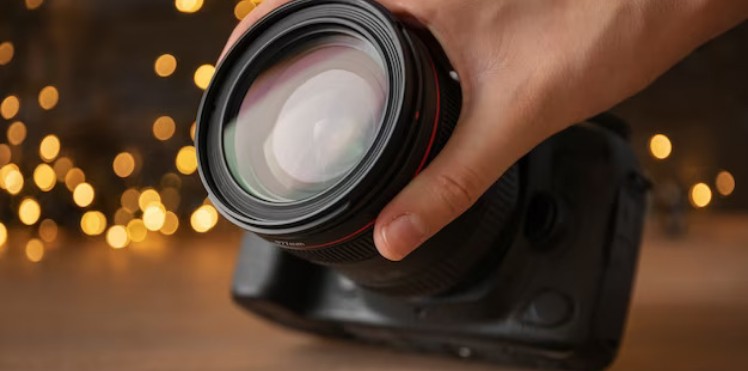INTRODUCTION
Throughout the history of photography, the lens has played a pivotal role in capturing moments and creating art. From the humble beginnings of manual focus lenses to the revolutionary advent of autofocus technology, the evolution of lens technology has been nothing short of remarkable. As a seasoned lens manufacturer with 40 years of experience, we have had a front-row seat to this transformative journey. In this in-depth article, we will embark on a captivating exploration of the fascinating progression of lens technology and its profound impact on the world of security.
THE BIRTH OF MANUAL FOCUS:
In the early days of photography, lenses were simple and rudimentary, requiring photographers to engage in the delicate art of manual focus. These early lenses were solely designed for photography, and their operation necessitated the photographer's hands-on involvement. Adjusting the focus ring was the primary means of achieving sharpness, a process that demanded skill, precision, and patience.
These early lenses, while limited in their application to photography, laid the crucial groundwork for the evolution of lens technology. The concepts and mechanisms developed during this era set the stage for what was to come. Fast forward to today, and we find that manual focus lenses have come a long way. Modern iterations of manual focus lenses have evolved into sophisticated tools, finding applications in diverse fields such as robotics, machine vision, inspection, and laboratory work.
These lenses have grown into versatile instruments, offering enhanced precision and control to meet the demands of an ever-evolving world. They continue to play a crucial role in various industries, even in the age of autofocus, where their unique attributes are prized for specific applications.
THE ADVENT OF AUTOFOCUS:
The lens technology landscape changed drastically with the introduction of autofocus. This monumental leap brought about a revolution in the capabilities of the security industry and photography as a whole. Autofocus systems employ a combination of mechanical, optical, and electronic components to automatically adjust the lens focus, eliminating the need for manual intervention. The result is quicker and more accurate focusing, ensuring optimal image quality and placement.
Suddenly, organizations across the spectrum could enhance their security measures. With autofocus lenses, they could secure all corners of their properties, both from various heights and angles. This transformation brought about a new era of convenience and efficiency in security and surveillance.
The integration of autofocus technology into photography also opened doors for creative exploration, enabling photographers to concentrate on composition and subject interaction without the distraction of manual focus adjustments. The significance of this development in the evolution of lens technology cannot be overstated.
PHASE DETECTION VS. CONTRAST DETECTION AUTOFOCUS:
The world of autofocus is not monolithic; it is divided into two primary categories: phase detection autofocus (PDAF) and contrast detection autofocus (CDAF). These systems employ different techniques to achieve the common goal of precise focusing, and each has its own strengths and applications.
PDAF relies on a dedicated sensor to measure the phase difference between light rays, resulting in rapid and accurate focusing. This technology has found its place in scenarios where speed and precision are paramount. For security systems that need to respond swiftly to changes in the environment, PDAF is a valuable asset.
On the other hand, CDAF takes a different approach by analyzing the contrast levels within the image to achieve focus. While it may not be as quick as PDAF, CDAF excels in situations where a slower and more deliberate focus adjustment is acceptable. The choice between these autofocus methods depends on the specific requirements of the application, and both have their roles in the evolving landscape of lens technology.
CONTINUOUS AUTOFOCUS AND TRACKING:
As lens technology continued to advance, it gave birth to the concept of continuous autofocus (AF-C). This feature enables a lens to continuously adjust focus as the subject moves, making it invaluable for capturing dynamic and fast-paced scenes. Whether in a sprawling sports complex or a bustling college campus, AF-C technology ensures that critical moments are captured with precision.
The evolution of AF-C has seen it become increasingly accurate and responsive. Today, it is a vital tool for numerous applications beyond sports and events. In the realm of security, where monitoring and tracking are of utmost importance, this technology enhances the capability to monitor and respond to changing conditions in real-time.
SILENT AND ULTRA-FAST AUTOFOCUS MOTORS:
In addition to advancements in autofocus methods, lens manufacturers have made significant strides in the development of silent and ultra-fast autofocus motors. These cutting-edge motors have redefined the user experience by ensuring near-silent operation and rapid focusing. Gone are the days of noisy, distracting autofocus mechanisms that could disrupt a quiet environment.
This development is particularly beneficial in scenarios where discretion is essential. For instance, in environments like busy warehouses with conveyor belts, the ability to focus quickly and quietly can make a significant difference in capturing critical moments without disturbance. The reduction of lag between pressing the shutter button and image capture enhances efficiency and overall image quality.
THE IMPACT ON SECURITY:
The evolution of lens technology from manual focus to autofocus has had a profound impact on security. The ability to secure properties from various angles and heights with speed and precision has transformed how we monitor and protect our environments. Whether in the context of large-scale security systems or in more specialized applications, lens technology has played a pivotal role in ensuring the safety of our cities and communities.
In large sports complexes, college campuses, transportation hubs, and public spaces, autofocus technology has become an indispensable tool for maintaining security and responding to potential threats swiftly. The dynamic nature of security demands the ability to adapt rapidly, and modern lens technology equips security professionals with the tools they need to meet these challenges head-on.
Beyond security, the evolution of lens technology has had a significant impact on the quality control and inspection processes in various industries. From manufacturing to healthcare, the ability to capture high-resolution images with precision and efficiency has led to improved quality assurance and error detection.
LOOKING TO THE FUTURE:
The evolution of lens technology is far from over. As lens manufacturers, we continue to push the boundaries of what is possible. Our mission is to provide businesses with the best lenses to deliver top-notch security and quality control. With ongoing advancements in technology, we can anticipate further breakthroughs in lens design, materials, and functionality. As the world becomes increasingly reliant on surveillance and monitoring for security and safety, the role of lens technology will continue to grow. New challenges will arise, and the lens will remain at the forefront of innovation in addressing these challenges.
CONCLUSION
In conclusion, the evolution of lens technology from manual focus to autofocus represents a compelling journey of innovation and progress. It has transcended the realms of photography to become a critical component in security, surveillance, and quality control across a wide range of industries. As we move forward, the future promises even more remarkable developments in the world of lens technology, ensuring that our cities and communities remain safe and our images captured with unprecedented clarity and precision.

